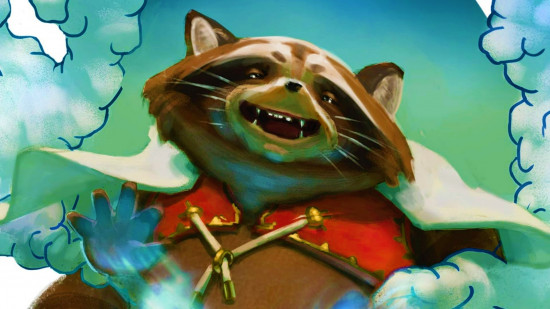Pathfinder is a tabletop RPG that deals in delight. Its latest release, a character guide for the Asian-inspired Tian Xia setting, is further proof of this. When such creativity and charm are on display, it’s hard not to compare Pathfinder with other prominent RPGs. In particular, the market leader, D&D, could learn a thing or two from Tian Xia’s character options.
The Tian Xia setting was first explored in Pathfinder’s first edition, and it takes a lot of inspiration from the various cultures of Asia. Tabletop RPG publisher Paizo takes us on a tour of the continent with two new books in 2024. The Tian Xia Character Guide introduces new Pathfinder races and customization options for the Pathfinder classes, while the Tian Xia World Guide fleshes out the setting with in-depth worldbuilding.
The Tian Xia World Guide describes 26 countries in the continent of Tian Xia, with detailed breakdowns of daily life, politics, culture, and religion. The Tian Xia World Guide is dense, as it treats each part of the continent as if it were a real country in a history book. Woven into these deep dives are compelling details and subtle plot hooks that could inspire a Tian Xia campaign.
The settings of Tian Xia feel alive and interesting, but it’s the ancestries that really shine. Roleplaying games are limited only by their rules and your imagination, and Pathfinder makes it possible to play as anyone or anything. The builds themselves are crunchy and endlessly customizable, but just as much care goes into creating fun, unconventional character concepts.
Many of Tian Xia’s heritages are familiar ideas that have been adapted to fit the continent’s cultures. The Tsukumogami Poppet is an awakened household object rather than a doll, meaning you can easily play as a sentient umbrella. These Poppets can sprout ghostly limbs, summon the spirits of mistreated tools to attack on their behalf, or simply scare the wits out of unexpecting enemies.
Sprites get four new heritages in Tian Xia, and these push the limits of what a hero can look like. Perhaps the most extreme example is the Dijiang, who “have the form of a faceless, leathery ball with short fur, six legs, and a connection to primordial chaos”. They have no face at all, and their unpredictable behavior means that a failed saving throw against an emotion effect is actually a success.
As for new ancestries, team Wargamer has fallen in love with the Tanuki, the new ‘silly little guys’ of Pathfinder. These rotund raccoon dogs are laid-back and fun-loving to a fault, meaning that hijinks follow them wherever they go. Their Attribute Boosts are Constitution, Charisma, and one free stat – and as you can imagine, their Attribute Flaw is Wisdom.
The rules descriptions are bursting with personality here. A Tanuki can drum on their stomach to create a cone of sonic damage, but “such vigorous drumming does leave your belly a bit sore, preventing you from using this ability again from 1d4 rounds”. Tanuki might spend illusory money, only for this trick to bite them in the butt 1d20 hours later. At higher levels, they can literally summon 808 Tanuki, who party so hard that they deal bludgeoning damage to all enemies in the area.
A more serious (but no less intriguing) ancestry is the Samsaran. These humanoids are distinguished by their blue skin and pupil-less eyes. They live near-endless lives, constantly reincarnating as part of a journey to enlightenment.
Enlightenment means different things for different Samsarans, but all of them can boost their Constitution, Wisdom, and a free stat, with Charisma as their Attribute Flaw. Samsaran feats increase your character’s knowledge through extra training, lore, and spells that expand your mind.
You can react to and modify failed rolls, as the cyclical nature of your reincarnations fortifies you against failure. Death is also no stranger to you, and your Samsaran characters can heal themselves or literally suppress death at higher levels.
The class-based rules understandably offer numerous martial arts options, but that’s not the only way Tian Xia tackles combat. The Fan Dancer archetype lets you turn a graceful performance into a deadly display of violence, while the Starlit Sentinel archetype turns your character into Literal Sailor Moon.
Pathfinder is about as complex as it comes for character building, but the crunch doesn’t mean that publisher Paizo sacrifices storytelling. Based on their concepts alone, the Tian Xia ancestries and archetypes have me stoked to start crafting a new character.
It’s a feeling I’m constantly chasing in Dungeons and Dragons, but I rarely react to the DnD classes and DnD races with such delight. I’m a big fan of the upcoming DnD 2024 Player’s Handbook, for example, but its character options could certainly be accused of coloring inside the lines. A brand-new approach to DnD 2024 backgrounds and a few more out-there options for the core species hasn’t reinvented the wheel.
Pathfinder’s focus on cool character options isn’t just limited to Tian Xia. For more on upcoming material, check out our exclusive Lost Omens: Rival Academies reveal. We can also show you some elemental options in our Pathfinder: Rage of Elements review.
Source: Wargamer




